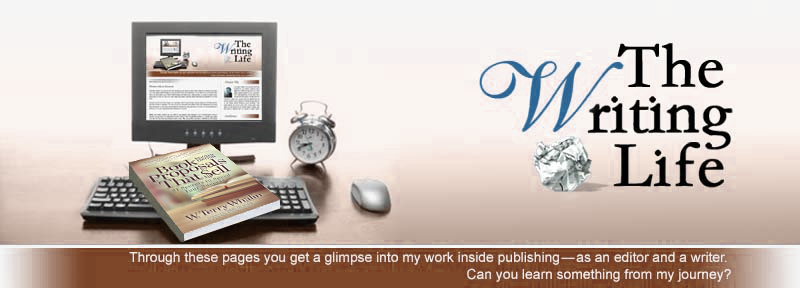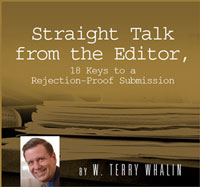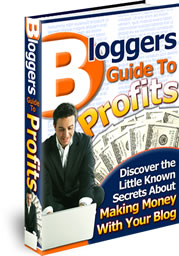Looking for the Silver Bullet
 I smiled when I read the chapter title, “What’s Your Silver Bullet?” in Bestselling Book Publicity by Rick Frishman and Robyn Spizman. It’s the perfect analogy when it comes to publicity. Many writers are looking for that one thing they can do which will break out their book and reach the audience. The longer I’m involved in publishing, the more I don’t believe it is a single action but more of a series of on-going efforts from the publisher and most importantly from the author. Now Frishman and Spizman are using the term differently in their book. They are talking about the silver bullet as the key message of your book. Other people call it the hook or the elevator speech or the soundbite. Every author needs to find this key message for their book and this key will stress a benefit for the reader and often be the message you use repeatedly with the media, your website and any other publicity effort. This silver bullet message will cut through the noise of the other ideas and make your idea stick in the hearts of readers.
I smiled when I read the chapter title, “What’s Your Silver Bullet?” in Bestselling Book Publicity by Rick Frishman and Robyn Spizman. It’s the perfect analogy when it comes to publicity. Many writers are looking for that one thing they can do which will break out their book and reach the audience. The longer I’m involved in publishing, the more I don’t believe it is a single action but more of a series of on-going efforts from the publisher and most importantly from the author. Now Frishman and Spizman are using the term differently in their book. They are talking about the silver bullet as the key message of your book. Other people call it the hook or the elevator speech or the soundbite. Every author needs to find this key message for their book and this key will stress a benefit for the reader and often be the message you use repeatedly with the media, your website and any other publicity effort. This silver bullet message will cut through the noise of the other ideas and make your idea stick in the hearts of readers.
Frishman and Spizman write, “Think of your silver bullet as the verbal business card for your book. It’s a brief, memorable description that you quickly give people you meet or those who may be interested in your book. Your silver bullet is your core message, the unique selling proposition that you must get across if you hope to successfully promote your book. It must penetrate your target market and be delivered rapidly and powerfully before your small window of media attention slams shut.”
OK, you have your elevator speech (something you can tell in an elevator ride) or silver bullet for your book. Throughout the rest of Bestselling Book Publicity, they detail how to use this key message over and over. These authors write about the primary tools for any campaign such as websites, media lists, media kits, press releases, question and answer sheets, business cards, newsletters and other promotional materials. The book includes an excellent chapter about working with the media with all sorts of wise advice about developing these key relationships. Why? Because the media can reach large audiences with a magazine article or a feature story or a personality profile. You want to tap into these possibilities to get the word out about your book. But you have to make sure your approach is right or you will only alienate the media (not what you want to do). I loved what Robyn Spizman said, “Instead of focusing on what the media can do for you, think more about what you can do for it. If you can make the media’s job easier by doing research, delivering great soundbites, and telling your media contacts about great people, those contacts will usually consider you when they could use information related to your message.”
There are rules for working with the media and you have to learn these rules in the publicity process. Frishman and Spizman write, “To build strong relationships with the media, be flexible and constantly, remind yourself that your goal is to get the media to publicize you and your book. So stay focused, be patient, persistent, and understanding because the road may be bumpy and long. Since your relationship isn’t equal, the media makes the rules and they differ from industry to industry, outlet to outlet, and person to person. When it wishes, the media can change the rules, and it will change them arbitrarily, when it suits its purposes. Suddenly, all of your hard work, your story or your appearance may be cut, rewritten, or cancelled.” Then they give three key points—good in many different situations beyond the media:
* “Even though you’re fuming inside, be professional, which in this case means act like you understand, because frankly, in most cases, there’s nothing you can do about it.”
* “Salvage something that will benefit you. Instead of wasting time and energy arguing, complaining, and raising your blood pressure, act understanding, be a team player. Ask if he or she can recommend anyone else whom you could contact.”
* “Never show anger or threaten. Instead, immediately focus on finding bargaining chips to position yourself for the future. Don’t say, ‘Okay, you owe me one’; just let it go. During subsequent contacts, plant subtle reminders by asking how the matter turned out.”
This book is loaded with wise counsel on other matters such as how to get bookings and coverage, interviewing tips, media training, e-mail blasts, campaign timelines and how to hire the best publicist for your campaign. This title is loaded with websites, contact information and other resources for every author.
Let me conclude this entry with some publicity advice from seasoned veteran Rick Frishman. It applies to many other aspects of publishing. “Publicity is a business with lots of rejection and few responses. It can take a dozen phone calls to get an interview with a major-market media outlet. Remember the Rule of Seven—it takes at least seven tries before you make contact. But one response, one yes, may be all you need to get your story told. Look at each no or lack of response not as a defeat or a setback, but as a small victory that puts you closer to the yes that will land you a feature or a booking.”





















1 Comment:
Terry,
Your last couple of postings were interesting, thought-provoking, and a bit frightening (as, perhaps, indicated by the lack of comments). We all know that we should be marketing, but since it makes us uncomfortable, it's easier to assume the ostrich posture. Thanks for continuing to remind us about this very vital part of the writing life.
Post a Comment
That's the writing life...
Back to the home page...